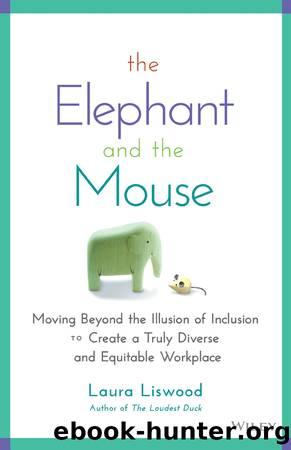The Elephant and the Mouse by Laura A. Liswood

Author:Laura A. Liswood [Liswood, Laura]
Language: eng
Format: epub
ISBN: 9781119836261
Publisher: Wiley
Published: 2022-03-07T00:00:00+00:00
Tracking systems for promotions, assignments, feedback, retention, and attrition are lacking or absent.
If your organization has any of these âsymptoms,â I suggest taking a Meritocracy Stress Test. After the global financial crisis of 2007â2009, bank regulators in the United States and other countries implemented what is known as the bank stress test to ensure that banks had enough capital to withstand an economic or financial crisis. It provides a snapshot into the hypothetical health of a financial institution and its ability to prevent failure, maintain trust, and provide protection to consumers. The annual test outlines categories in a few key areas for evaluation, including level of capital, credit risk, market risk, and liquidity risk. It provides a way for banks to go beyond saying they are financially sound to proving that they truly are.
I propose a similar test for any organization that considers itself a meritocracy. I call it the Meritocracy Stress Test. It is an opportunity for a company to discover whether it is at risk of not being the diverse, inclusive, fair, and equitable workplace it purports to be. To date, every organization I have worked with proclaims it is a meritocracy: the bedrock for values, mission statements, and selfâperception. But to prove that shining assertion, there are many questions to ask.
For each of the following propositions, rate your company 1â5, with 1 meaning you haven't focused on this issue, and 5 meaning your organization is completely cognizant of the dynamic and is acting upon it:
Engaging in focus groups or surveys with specific members of the company. As mentioned earlier, the framework of the Elephant and the Mouse holds here. We must get better at understanding how everyone in the organization is experiencing the workplace and not assume we have a shared set of experiences. Focus groups, surveys, oneâonâone conversations, and listening to employee resource groups are all tools that need to become part of the ongoing lexicon of an organization.
Analyzing your data. McKinsey reports that women and other underrepresented groups do get promoted, just at a slower rate than their White male counterparts.6 Is that true in your company? HR will have the data, so ask them to show you what the speed of promotion looks like for different segments of the company. How many women and people of color are just ânot readyâ to be promoted? If necessary, hire a data translator who can figure out how to mine the data you have based on the questions that need to be asked. Study data on pay gaps and bonus gaps. What does that tell you? Check gender gap reports, such as the World Economic Forum Global Gender Gap Report. It can give you a sense of your country rank and potentially be a reflection of corporate performance overall.
Another area to examine is personnel evaluations: Are women more likely to be criticized for their communication styles than men? One study by Kieran Snyder7 found that 76% of women's evaluations critiqued them as aggressive and sharpâelbowed, compared to only 2% of men's evaluations.
Download
This site does not store any files on its server. We only index and link to content provided by other sites. Please contact the content providers to delete copyright contents if any and email us, we'll remove relevant links or contents immediately.
| Ethics | Etiquette |
| Fashion & Image | Health & Stress |
| Motivation & Self-Improvement | Work Life Balance |
| Workplace Culture |
Tools of Titans by Timothy Ferriss(8159)
Change Your Questions, Change Your Life by Marilee Adams(7570)
Deep Work by Cal Newport(6822)
Man-made Catastrophes and Risk Information Concealment by Dmitry Chernov & Didier Sornette(5880)
Playing to Win_ How Strategy Really Works by A.G. Lafley & Roger L. Martin(5778)
Digital Minimalism by Cal Newport;(5590)
Big Magic: Creative Living Beyond Fear by Elizabeth Gilbert(5559)
The Slight Edge by Jeff Olson(5318)
Ego Is the Enemy by Ryan Holiday(5230)
The Motivation Myth by Jeff Haden(5127)
Stone's Rules by Roger Stone(4991)
The Laws of Human Nature by Robert Greene(4929)
Tuesdays with Morrie by Mitch Albom(4603)
Eat That Frog! by Brian Tracy(4389)
Rising Strong by Brene Brown(4344)
Skin in the Game by Nassim Nicholas Taleb(4125)
The Money Culture by Michael Lewis(4029)
Bullshit Jobs by David Graeber(3997)
Skin in the Game: Hidden Asymmetries in Daily Life by Nassim Nicholas Taleb(3870)
